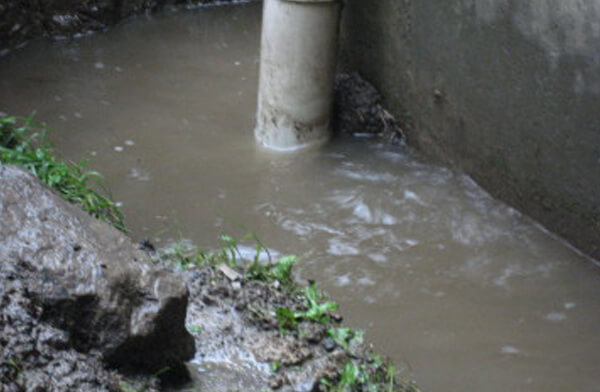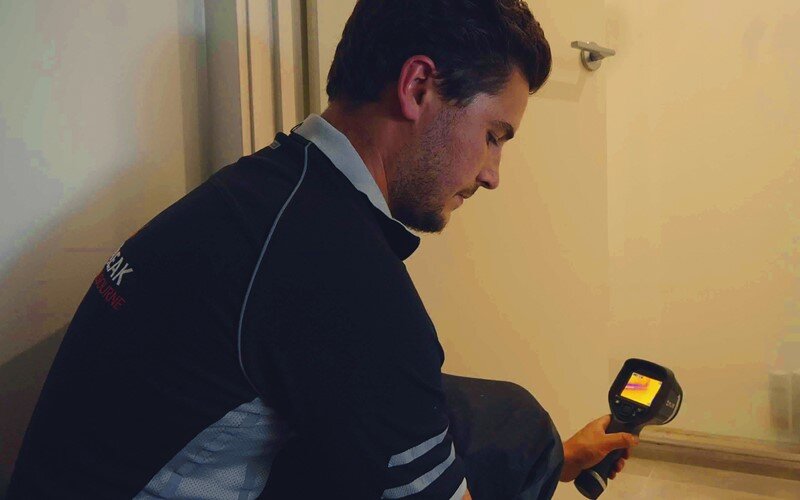Exactly how to Inspect If Your House Has a Concealed Leakage
Exactly how to Inspect If Your House Has a Concealed Leakage
Blog Article
We have found this article involving Detecting hidden plumbing leaks listed below on the web and think it made good sense to talk about it with you here.

Early discovery of leaking water lines can reduce a prospective disaster. Some small water leaks may not be visible.
1. Check Out the Water Meter
Examining it is a guaranteed method that helps you discover leakages. If it moves, that shows a fast-moving leakage. This indicates you may have a slow-moving leak that can also be underground.
2. Check Water Consumption
Evaluate your water bills and also track your water usage. As the one paying it, you ought to discover if there are any type of inconsistencies. If you find sudden changes, regardless of your usage being the same, it suggests that you have leakages in your plumbing system. Remember, your water bill must fall under the very same variety each month. An unexpected spike in your costs indicates a fast-moving leakage.
A constant rise every month, even with the same habits, reveals you have a slow leakage that's likewise slowly escalating. Call a plumber to thoroughly inspect your residential or commercial property, particularly if you feel a warm area on your floor with piping beneath.
3. Do a Food Coloring Examination
When it comes to water usage, 30% comes from bathrooms. If the shade somehow infiltrates your bowl during that time without flushing, there's a leak in between the container and also dish.
4. Asses Exterior Lines
Do not forget to inspect your outside water lines also. Should water leak out of the connection, you have a loose rubber gasket. One tiny leakage can waste bunches of water as well as surge your water costs.
5. Inspect and Evaluate the Situation
House owners should make it a habit to check under the sink counters and also even inside cabinets for any bad odor or mold and mildew growth. These two warnings show a leakage so punctual focus is called for. Doing routine inspections, also bi-annually, can conserve you from a major trouble.
More significantly, if you know your home is currently old, keep a watchful eye on your heating units, hoses, pipelines and so on. Check for discolorations and also damaging as most appliances and also pipes have a life span. They will likewise normally degrade as a result of tear and also put on. If you think leaking water lines in your plumbing system, do not wait on it to rise. Call a specialist plumber as soon as possible so you don't end up with a horrible mess in your home.
Early discovery of dripping water lines can alleviate a potential calamity. Some little water leaks might not be noticeable. Checking it is a proven way that helps you uncover leaks. One small leak can waste tons of water as well as surge your water costs.
If you suspect dripping water lines in your plumbing system, don't wait for it to intensify.
WARNING SIGNS OF WATER LEAKAGE BEHIND THE WALL
PERSISTENT MUSTY ODORS
As water slowly drips from a leaky pipe inside the wall, flooring and sheetrock stay damp and develop an odor similar to wet cardboard. It generates a musty smell that can help you find hidden leaks.
MOLD IN UNUSUAL AREAS
Mold usually grows in wet areas like kitchens, baths and laundry rooms. If you spot the stuff on walls or baseboards in other rooms of the house, it’s a good indicator of undetected water leaks.
STAINS THAT GROW
When mold thrives around a leaky pipe, it sometimes takes hold on the inside surface of the affected wall. A growing stain on otherwise clean sheetrock is often your sign of a hidden plumbing problem.
PEELING OR BUBBLING WALLPAPER / PAINT
This clue is easy to miss in rooms that don’t get much use. When you see wallpaper separating along seams or paint bubbling or flaking off the wall, blame sheetrock that stays wet because of an undetected leak.
BUCKLED CEILINGS AND STAINED FLOORS
If ceilings or floors in bathrooms, kitchens or laundry areas develop structural problems, don’t rule out constant damp inside the walls. Wet sheetrock can affect adjacent framing, flooring and ceilings.
https://www.servicemasterbyzaba.com/blog/how-to-detect-water-leakage-in-walls/

I stumbled upon that piece of writing on Hacks to detect leaks when exploring the search engines. Liked our content? Please share it. Let someone else find it. I am grateful for your time. Visit again soon.
Report this page